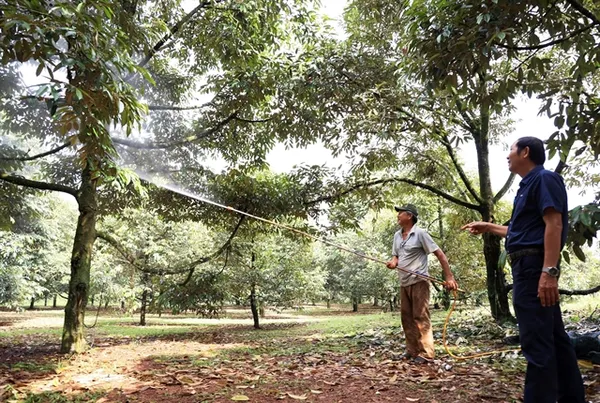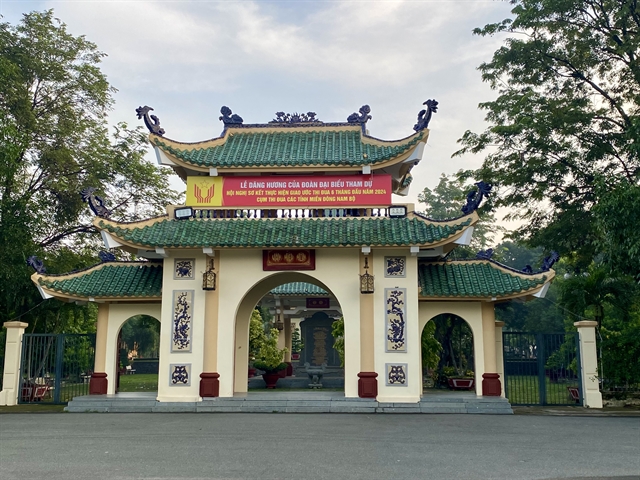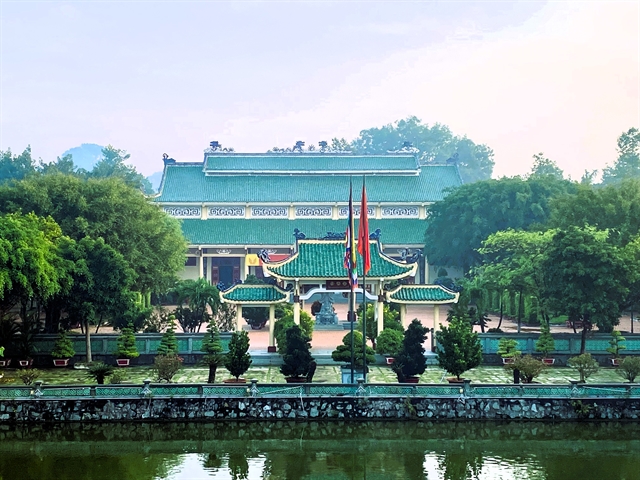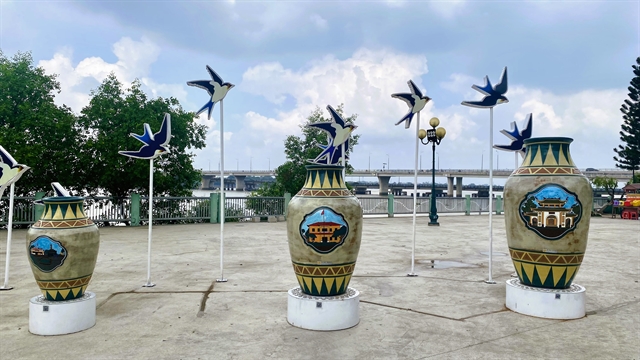 Society
Society

 |
| FAMOUS TEMPLE: The Trấn Biên Temple of Literature, which was recognised as a national historical heritage in 2016, is one of the most visited destinations in Biên Hoà City. VNS Photo Phương Mai |
The southern province of Đồng Nai is planning to create a heritage trail to explore heritage sites and traditional craft villages in Biên Hoà City.
According to Nguyễn Xuân Thanh, vice chairman of the city’s People’s Committee [municipal administration], the Biên Hoà – Đồng Nai Heritage Trail will run from Nguyễn Văn Trị Pedestrian Street in Hoà Bình Ward to the Vĩnh Cửu District.
The work aims to create a tourism product imbued with the province’s history and culture, and preserve and promote its cultural and historical heritage.
With more than 300 years of establishment and development, Biên Hoà has a long and rich history and culture.
The trail will lead people through national historical and cultural heritage sites such as Tân Lân Temple in Hoà Bình Ward, and Bửu Long Cultural Park and the Trấn Biên Temple of Literature in Bửu Long Ward.
Of them, Trấn Biên Temple was recognised as a national historical heritage in 2016 and is known as the most visited destination in the city.
The temple welcomes around 300,000 visitors, including high-ranking state leaders, governmental officials, diplomatic delegations, educators, students, and local and international visitors, each year.
The temple was built in 1715 to honour Confucius and serve as an educational centre. It was the first temple of its kind in the South.
The construction was demolished in 1861 and restored in 1998.
 |
| POPULAR DESTINATION: The Museum of Đồng Nai Province plans to apply technologies to provide digital images and information about the Trấn Biên Temple of Literature to help visitors understand more about the site. VNS Photo Phương Mai |
The temple was opened to the public in 2002 covering an area of five hectares, and quickly became one of the most important destinations in the South where visitors can learn more about the history of Việt Nam and its national heroes, and the cultural and educational values of the land of Biên Hoà – Đồng Nai.
Its main gate has three entrances. Behind the gate is a memorial wall engraved with an epic poem on the history of the country and the establishment of Biên Hoà – Đồng Nai written by late cultural researcher Vũ Khiêu.
The temple also includes the Khuê Văn Các (Constellation of Literature Pavilion), the Thiên Quang Well (Well of Heavenly Clarity), Đại Thành Gate, an altar of Confucius, and a courtyard.
The centre of its main hall is an altar of President Hồ Chí Minh, while two sides are places to worship the country’s great scholars such as Chu Văn An, Nguyễn Trãi and Nguyễn Du.
According to the authority of the Museum of Đồng Nai Province, the museum has completed repairing and upgrading the temple to turn it into a cultural space offering various activities such as heritage education programmes, history quizzes, cultural exhibitions, and traditional art performances.
In the future, the museum will apply technologies such as QR code, 3D mapping, and 3D holograms to provide digital images and information about the temple to help visitors understand more about the site.
Biên Hoà ceramics
 |
| BEAUTIFUL CERAMICS: Large flower vases are set up at Nguyễn Văn Trị River Park in Hoà Bình Ward to promote Biên Hoà ceramics among the public. VNS Photo Phương Mai |
Following the Biên Hoà – Đồng Nai Heritage Trail, people will have opportunities to explore Biên Hoà ceramics villages, the most famous ancient craft villages in the city.
Located along the basin of the Đồng Nai River, ceramics villages have existed in Biên Hoà for over 300 years, offering terracotta products with simple and natural beauty, or exquisite ceramic items diverse in styles, colours, patterns and glazes.
Phan Thị Thu Hiền, a lecturer at the HCM City University of Humanities and Social Sciences, said at a seminar on the preservation of Biên Hoà ceramics held in the city last December that the heritage of Biên Hoà ceramics not only included household items and decorative or art products. It also spread the fame of a unique celadon glaze, known as “vert de Bien Hoa”, in the international market.
The “vert de Bien Hoa” glaze is made from ash glazes and copper alloys, which emerged in the 1920s. It is used to make large flower vases, animal statues, or roof titles.
“Biên Hoà ceramics have played an important role in spreading the brand of Biên Hoà in particular and Đồng Nai in general,” Hiền said,
"The use of Biên Hoà ceramics in architecture, sculpture, and decoration also contributes to elevating the historical, cultural and aesthetic values of the historical heritage of Biên Hoà,” she added,
Along with the Cây Mai ceramics of HCM City and Lái Thiêu ceramics of Bình Dương Province, Biên Hoà ceramics were known both at home and abroad in the late 19th century and early 20th century.
However, today, ceramics villages are disappearing. They are now mostly located in Tân Hạnh, Hóa An, Bửu Hòa, Tân Vạn, and Hiệp Hòa wards.
The provincial Department of Culture, Sports and Tourism is preparing to launch the Biên Hoà – Đồng Nai Traditional Ceramics Festival in 2025 as part of the province’s effort to preserve and promote the province’s ancient craft. VNS




